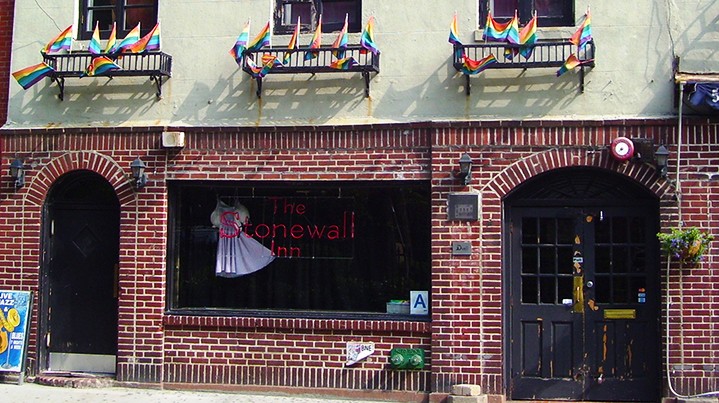A Digital Project Maps the Sites of New York’s LGBT History

In 1994, three former students in Columbia’s historic preservation program helped create the first map of LGBT history in New York City. An eight-page foldout, it listed 25 sites, ranging from Central Park’s Bethesda Fountain to the St. Regis Hotel, whose King Cole Bar “had a reputation as a meeting place for gay men.”
Fast forward 20 years and Andrew Dolkart (GSAPP’77), Ken Lustbader (GSAPP’93) and Jay Shockley reunited to bring their original idea into the digital age. Launched in 2014, the NYC LGBT Historic Sites Project recognizes important city locations connected to LGBT history, including icons such as the Stonewall Inn and the University’s own Earl Hall, home to the first collegiate gay group in America, the Student Homophile League, which was organized in 1966. Beginning in 1970, gay dances were held there on the first Friday of each month. In 2018, Earl Hall was listed on the National Register of Historic Places for its significance.
“Identifying LGBT sites is not something of interest to just a limited number of people,” said Dolkart, a professor of architecture, planning and preservation at Columbia. “LGBT history is American history and it is important to understand the contributions of LGBT people and LGBT communities just as we investigate and celebrate the contributions of other groups to our history and culture.”
PRIDE OF LIONS
On May 9, the Preservation League of New York State presented the NYC LGBT Historic Sites Project with its Excellence in Historic Preservation award.
“We are passionate about the project to identify, interpret and, we hope, preserve sites of significance to LGBT communities,” Dolkart said. “These sites can be so meaningful to people, providing a sense of their history within the continuum of development and change in New York.” It is also a social justice project, he added, because it makes the public aware of the importance of LGBT history to the city. “This is something that could not be done in many places in the world where being LGBT is illegal or even punishable by death,” Dolkart said.
The digital project, whose team includes Amanda Davis (GSAPP’06) and Cristiana Pena (GSAPP’08), encompasses all five New York City boroughs. The earliest entry, around what today is Whitehall Street in Manhattan, is the site of the 1646 hanging of a man for sodomy in New Amsterdam, more than a dozen years before the island was renamed New York. There are sites listed through the year 2000 with entries grouped into categories such as lesbian life, the AIDS crisis, transgender history and the Harlem Renaissance.
One of Dolkart’s favorites on the map is Julius’ Bar in Greenwich Village, site of the 1966 “Sip-In” (an homage to civil rights era sit-ins) in which members of an early gay rights group, the Mattachine Society, challenged a New York State Liquor Authority policy that deemed the mere presence of a homosexual in a bar as de facto disorderly.
Another Dolkart favorite is the Winter Garden Theatre, site of numerous productions with LGBT talent. He maintains that the 1957 production of West Side Story had perhaps the greatest confluence of gay and lesbian talent of any major Broadway musical in history. Jerome Robbins directed and choreographed, Leonard Bernstein composed the music, Stephen Sondheim wrote the lyrics, Arthur Laurents penned the libretto, Oliver Smith designed the sets, Jean Rosenthal conceived the lighting, Irene Sharaff designed the costumes and Larry Kert played Tony. The rest was theater history.
“Gay men have long been a major source of audiences for Broadway musicals. Perhaps this makes it particularly powerful for that audience, of which I include myself,” Dolkart said.
Then there is Stonewall. On June 28, 1969, a police raid on the Greenwich Village pub led patrons to engage in violent demonstrations that marked a turning point in the gay rights movement. “The story of Stonewall is not just about the bar itself,” said Dolkart. “The events went beyond the bar into rioting in the streets.” When completing the National Register nomination for Stonewall in 1998, with several colleagues, Dolkart had to figure out where to draw the boundares for the event. He had advice from a member of the New York State Historic Preservation Office, who made an unlikely comparison: “Use the guidelines for Civil War battlefields,” Dolkart was told. “Focus on where the events took place, not what happened before or after. The site was the first ever recognized by the federal government for its LGBT history and has since become a national monument.